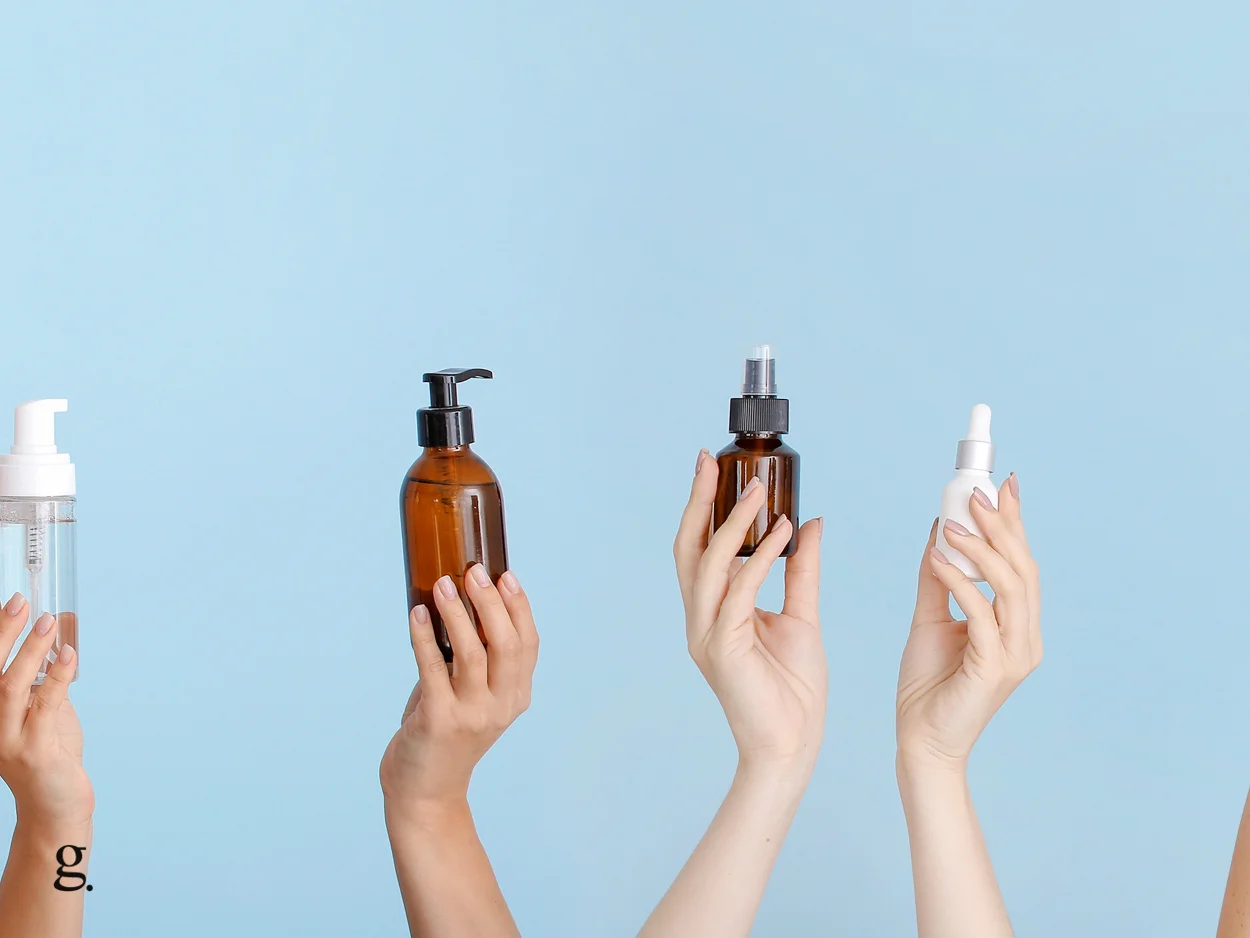It may surprise you to learn that skincare is actually one of the oldest and most widely practiced forms of beauty in the world, with historians having traced what would be considered “skincare” back to ancient civilizations as early as 6000 BC, according to some sources.
So, buckle up as we give you a crash-course history lesson on how skincare was invented!
The earliest known origins of skincare
Throughout history, cultures around the world have developed their own rituals for cleansing and purification, and while the means of which is not completely clear (it may have been done for cosmetic purposes, or for religious reasons), the fact is, the practice of skincare is ancient and deeply routed in humanity’s past.
Skincare in ancient Egypt
Some of the earliest origins of what could be considered skincare are traced back to the ancient Egyptians.
People would bathe in the Nile River as a way to cleanse their bodies and prepare for religious ceremonies, with some sources saying they believed that the water had cleansing properties. The people of ancient Egypt allegedly believed that cleanliness was necessary for good health and to ward off evil spirits.
It is believed that the ancient Egyptians followed a rudimentary skincare routine that involved cleansing and treating the skin with natural ingredients:
- They rubbed dead sea salts across their skin to remove/draw out impurities
- They bathed using soap made from a mixture of clay and oil.
- They applied a mixture of milk and honey to moisturize and hydrate the skin
Skincare in ancient Greece
Around a similar era of history, the ancient greeks had similar skincare rituals that involved the usage of natural oils and foods that had moisturizing effects.
The three main ingredients ancient Greeks used for skincare were olive oil, honey, and greek yogurt. The olive oil and honey served as what we’d now class as a basic moisturizer, due to their natural humectant and emollient content, while the yogurt was thought to be used to soothe and calm inflamed/irritated skin.
Historians also believe that the ancient greeks would create basic facial masks, using a crude mixture of finely crushed-up berries and citrus fruits, mixed with milk and/or yogurt; the natural acids found within the fruits produced mild exfoliating effects.
Skincare in the middle ages
While it’s not particularly regarded as the cleanest of times (especially when you see how medieval times are portrayed in modern media), skincare routines did exist, as staying clean was seen as a sign of wealth and status.
Those who could afford to maintain a clear complexion were doing well for themselves, but skincare wasn’t just about vanity. In a time before modern medicine, people believed that the condition of one’s skin was a reflection of their health.
Much like the times that preceded it, skincare in the middle ages involved topically applying natural substances like fats, oils, and dairy to the skin to utilize their moisturizing and antibacterial effects.
The 1800s: The first-ever commercial skincare products began to be developed
During the 1800s, the world saw the development of what we’d consider the first-ever commercial skincare products, this included moisturizing creams, chapsticks, balms, and basic soap face-washes.
The true first-to-market skincare product is unfortunately not known, however many speculate that it was a company known as Shiseido, which began making cosmetics commercially in 1897.
Before this time, most people relied on natural remedies involving the use of topically-applied foodstuffs known for their moisturizing/antibacterial/soothing effects to care for their skin. It wasn’t until the would-be businessmen and factory owners around the turn of the century started commercially producing these products and distributing them across the world, that the skincare industry was officially born, laying the foundation for the modern industry we have today.
The 1900s: The rise and growth of mainstream skincare
The early 1900s saw a dramatic increase in the use of cosmetics and skincare products and a gigantic surge in their popularity, as they became more and more affordable and accessible – no longer being a luxury just for the very rich, and no longer just being for women.
This golden era of skincare introduced many of the modern products that we still use and love today, such as anti-aging formulas, brightening products, treatment serums, exfoliators and cleansers, sunscreens, etc.
Unlike the first wave of skincare products that launched in the 1800s, which mainly consisted of just one active ingredient, towards the middle of the 1900s, formulas started getting significantly more advanced, with chemists being able to create creams/serums/lotions/ointments containing multiple different active ingredients, all of which designed to bring a multitude of skin benefits to the end-user.
With their increased effectiveness and a massive amount of money being spent on marketing, skincare products’ popularity skyrocketed. The industry continued to grow, surging to a $10B worldwide industry by the 1940s, hitting a peak of $400B~ by the 1990s, so it’s fair to say that the skincare industry took the world by storm.
The 2000s: The inception of nutricosmetics, masks, patches, and devices
In the early 2010s, the world saw its first wave of “nutricosmetics” hit the market. These nutritional cosmetics were a completely new type of skincare product that wasn’t topically applied to the skin but rather ingested in the form of a dietary supplement.
While the concept of taking vitamins and supplements for “internal skincare” had been around since the early 2000s, it was only in the 2010s that they became refined, popularly accepted, and found on the shelves of beauty stores worldwide.
These products contained a variety of ingredients designed to improve skin health from within, such as antioxidants, probiotics, omega-3 fatty acids, and more – and they quickly gained a loyal following, becoming a multi-billion dollar industry.
Furthermore, the early 2000s saw the launch of sheet masks and patch-based products. Rather than being a typical cream or serum, these types of products came pre-soaked in the precise dose for the end-user and were applied and left on the skin to fully absorb – something completely novel and innovative at the time.
Finally, skincare devices, such as skin spatulas, skincare fridges, ultrasonic scrubbers, and at-home facial lasers all saw their debut in the 2000s, to massive commercial success, with many skincare companies attempting to extend skincare beyond topically applied formulas to a whole range of devices and gadgets made to enhance the skin’s physical appearance.
Modern-day skincare products
In today’s beauty market, there is an overwhelming amount of skincare products to choose from.
There are thousands of brands, and even more products, all with their own benefits and use cases. Additionally, we’ve now got products that are tailor-formulated to certain skin types (such as sensitive, oily, dry, etc.), as well as products made specifically for ethnic skin (such as formulas made purposely for black/African skin).
While there are more products out there than anyone would realistically need, the fundamentals of a modern-day skincare routine are somewhat simple – you need a daily cleanser, moisturizer and sunscreen, and any treatments you want/need for your skincare goals.
The future of skincare
Innovation is happening all the time, and the future of skincare is looking more and more personalized.
Advances in technology are allowing us to target our skincare products more specifically to our skin types and needs. We can now make products tailored to an individual’s skin, and create a personalized regimen – soon we’ll be able to do this cost-effectively.
Additionally, we are seeing an increase in plant-based and natural/vegan ingredients as consumers become more concerned about the origins of the products they’re using on their skin.
Moreover, there is a growing demand for sustainable and eco-friendly packaging. As we become more aware of the impact our choices have on the environment, many skincare brands are working hard to create packaging that is recyclable or compostable.
Overall, the future of skincare looks bright, with more innovations appearing every year.

